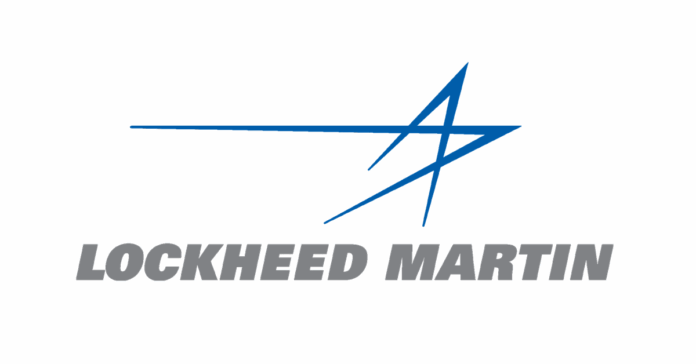LMT’s valuation suggests it’s fairly priced.
As investors, we’re always on the hunt for companies that offer both stability and value. Lockheed Martin (LMT), a titan in the aerospace and defense sector, is a prime candidate for such scrutiny. Known for its cutting-edge technology and robust government contracts, LMT has long been a staple in portfolios seeking reliability and growth. In this post, we’ll evaluate LMT’s intrinsic value using two powerful valuation methods—Warren Buffett’s Discounted Cash Flow (DCF) approach and the McGrew Valuation Method—while also diving into its trailing 12-month (TTM) Return on Equity (ROE) and Return on Net Tangible Equity (RONTE). Our analysis leverages detailed financial data to provide a clear picture of whether LMT is a buy, hold, or pass at its current price. Let’s break it down.
Valuation Methodology: Buffett and McGrew Approaches
To determine LMT’s intrinsic value, we used two distinct methods outlined in a comprehensive valuation framework. The Buffett Valuation Method applies a straightforward DCF model, projecting free cash flows (FCF) over 10 years based on historical growth, then calculating a terminal value. The McGrew Valuation Method refines this for growth stocks by allowing a declining growth rate, but defaults to the Buffett approach for non-growth companies. Both methods use an 8% discount rate (4% Treasury yield + 4% premium) and a 2.5% perpetual growth rate for terminal value calculations.
Step 1: Gathering Financial Data
We sourced LMT’s financials from detailed quarterly reports, focusing on FCF, shares outstanding, and the latest stock price. The FCF data for the past five years (2020–2024) shows:
- 2024: $4,985 million
- 2023: $6,229 million
- 2022: $6,132 million
- 2021: $7,699 million
- 2020: $8,644 million
The 5-year FCF Compound Annual Growth Rate (CAGR) is -10.65%, and the 3-year CAGR (2022–2024) is -9.83%, indicating a decline in FCF. Per the valuation guidelines, we classify LMT as a stable, non-growth stock and apply a conservative 5% growth rate for both methods. Shares outstanding as of Q1 2025 are 234,295,953. The last closing price, verified from Yahoo Finance and Google Finance for June 20, 2025 (the most recent trading day before June 22, a Sunday), is $470.34.
Step 2: Buffett Valuation
Starting with LMT’s 2024 FCF of $4,985 million, we project FCF for 10 years at 5% growth. For example:
- Year 1: $5,234.25 million
- Year 10: $8,120.04 million
The terminal value in Year 10 is calculated as:
Terminal Value=8,120.04×(1+0.025)0.08−0.025≈151,318.91 million\text{Terminal Value} = \frac{8,120.04 \times (1 + 0.025)}{0.08 – 0.025} \approx 151,318.91 \, \text{million}\text{Terminal Value} = \frac{8,120.04 \times (1 + 0.025)}{0.08 - 0.025} \approx 151,318.91 \, \text{million}
Discounting all cash flows and the terminal value to present value (PV) at 8% yields a total PV of $112,983.71 million. Dividing by shares outstanding gives an intrinsic value per share of $482.18. Applying a 25% margin of safety (0.75 factor), the price becomes $361.64.
Step 3: McGrew Valuation
Since LMT’s FCF CAGR is negative (<10%), the McGrew method mirrors the Buffett method for non-growth stocks, using the same 5% growth rate. Thus, the intrinsic value per share is identical: $482.18, with a 25% margin of safety price of $361.64.
Step 4: Valuation Status
Comparing the closing price ($470.34) to the intrinsic value ($482.18):
Percentage Difference=470.34−482.18482.18×100≈−2.46%\text{Percentage Difference} = \frac{470.34 – 482.18}{482.18} \times 100 \approx -2.46\%\text{Percentage Difference} = \frac{470.34 - 482.18}{482.18} \times 100 \approx -2.46\% This falls within the Hold range (-6% to +35% of intrinsic value). LMT is neither a screaming buy (<25% below, or <$361.64) nor overvalued (>36% above, or >$655.76).
Valuation Table
Here’s the valuation summary, ready to copy and paste:
| Stock Ticker | Valuation Method | Intrinsic Value per Share | Price with 25% Margin of Safety | Last Closing Price | Valuation Status |
|---|---|---|---|---|---|
| LMT | Buffett Valuation | $482.18 | $361.64 | $470.34 | Hold |
| LMT | McGrew Valuation | $482.18 | $361.64 | $470.34 | Hold |
Profitability Metrics: ROE and RONTE
Beyond valuation, profitability metrics like ROE and RONTE offer insight into how efficiently LMT uses its equity. Using TTM data ending Q1 2025:
- Net Income (TTM): $5,503 million (sum of Q2 2024 to Q1 2025 net income).
- Average Shareholders’ Equity: $6,608.2 million (average of Q1 2024 to Q1 2025 common stock equity).
- Average Net Tangible Equity: -$6,323 million (average of net tangible assets, reflecting high goodwill and share repurchases).
ROE Calculation
ROE=5,503,000,0006,608,200,000×100≈83.28%\text{ROE} = \frac{5,503,000,000}{6,608,200,000} \times 100 \approx 83.28\%\text{ROE} = \frac{5,503,000,000}{6,608,200,000} \times 100 \approx 83.28\%
LMT’s TTM ROE of 83.28% is exceptional, far surpassing the aerospace and defense industry median of 4.97%. This high ROE reflects LMT’s leveraged capital structure, with a debt-to-equity ratio of ~2.7, amplifying returns but adding risk.
RONTE Calculation
RONTE=5,503,000,000−6,323,000,000×100≈−87.03%\text{RONTE} = \frac{5,503,000,000}{-6,323,000,000} \times 100 \approx -87.03\%\text{RONTE} = \frac{5,503,000,000}{-6,323,000,000} \times 100 \approx -87.03\%
The negative net tangible equity, driven by significant intangible assets (e.g., goodwill from acquisitions) and share repurchasing, renders RONTE not applicable for practical analysis. Negative RONTE is common in firms like LMT with high intangibles and is not a meaningful metric here.
What Does This Mean for Investors?
LMT’s valuation suggests it’s fairly priced at $470.34, aligning closely with its intrinsic value of $482.18, making it a Hold. The high ROE underscores efficient use of equity, but the negative RONTE highlights the impact of intangibles and leverage. Investors should consider LMT’s strengths—stable government contracts, leadership in defense technology, and consistent dividends (TTM dividend payments of $3,075 million)—against risks like declining FCF and reliance on debt.
Limitations and Considerations
- Negative FCF Growth: The -9.83% 3-year CAGR suggests challenges, possibly from increased capital expenditures or working capital needs. The 5% growth assumption may be optimistic; a lower rate could reduce intrinsic value.
- Leverage: High debt levels boost ROE but increase financial risk, especially in a rising interest rate environment.
- Data Reliance: Calculations used provided financials, with the closing price from June 20, 2025, due to non-trading on June 22. External factors like defense budgets or geopolitical events weren’t modeled but could impact future performance.
Final Thoughts
Lockheed Martin remains a cornerstone of the defense industry, offering stability and strong profitability metrics. However, its current price reflects fair value, suggesting investors hold unless the price drops below $361.64 for a margin of safety. The high ROE is a testament to its efficiency, but the negative RONTE underscores the need to look beyond tangible equity for such firms. For those eyeing LMT, monitoring FCF trends and macroeconomic factors will be key.
#StockMarket #Investing #LockheedMartin #LMT #Valuation #BuffettValuation #McGrewValuation #ROE #StockAnalysis #Finance #InvestmentStrategy #AerospaceDefense #PortfolioManagement

